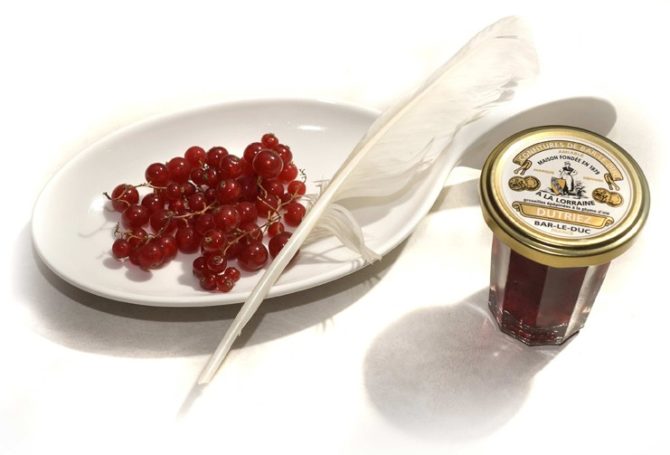Bar-le-Duc Confitures

A Best of France selection.
Mary Queen of Scots dubbed it a ray of sunshine in a jar; another admirer called it a gem set in a glass jewelbox. Confitures Bar-le-Duc, luscious preserves made from red or white currants, have been inciting extravagant praise since the 14th century. Always considered a luxury product, the confitures are still made in the town of Bar-le-Duc in Lorraine, 150 miles east of Paris and not far from Verdun. They were a favorite on royal tables by the 16th century, but in fact the first mention of these remarkable preserves goes back to 1344, when an aristocrat who won a court case thanked the judges by presenting them with several jars of the delicacy. The fabrication method has not changed since then—a fact that’s all the more astonishing when you consider that each berry is seeded by hand, by women called épépineuses, using a sharpened goose quill. Not only nimble fingers but sharp eyes and enormous patience are required for the job, and for generations mothers in Bar-le-Duc have transmitted their know-how to their daughters. After making a tiny slit in the side of the currant with the curved quill, the épépineuse slides out the seeds—an average of seven per berry. She then taps the slit closed again so the fruit retains its shape and flavor in the boiling sugar syrup into which it’s plunged. The result is brilliant flavor and the “pop” of an almost-fresh currant in every mouthful. Sold in distinctive little faceted glass jars, the confitures are available online in France or at fine grocery stores.
Originally published in the December 2008 issue of France Today.
Share to: Facebook Twitter LinkedIn Email



